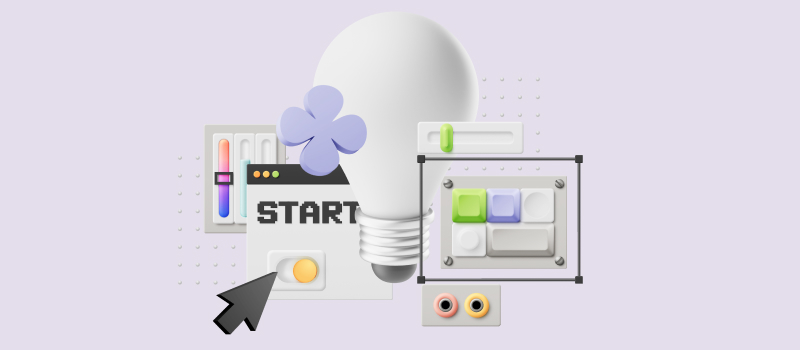
Every business without exception needs to keep up with how its staff is performing – this is the only way to stay efficient, ensure high-quality work results, meet the set deadlines, and avoid costly mistakes. However, the way you monitor employees’ day-to-day activities makes a huge difference.
Today, companies can choose from a large variety of activity and location tracking systems that may provide them with insight into everything their employees do throughout the day: from the websites they visit to their keyboard activity. There is an abundance of tech tools with functionality for live video feeds, customizable screen capture, and user-based behavior analytics that let you conduct “stealth monitoring.” And as a 2018 Gartner study revealed, over 50% of large corporations in their sample (n = 239) are already using such “nontraditional monitoring techniques.”
While the temptation to keep a close eye on your team is high and there are plenty of means to make that happen, excessive monitoring causes undue stress among employees and may ultimately have a terrible effect on team morale and performance. That’s why it’s essential to monitor your employees respectfully in order to create a positive work environment that encourages growth and actually promotes team productivity instead of harming it.
In this blog post, we’ll explore some helpful tips on how to monitor employee productivity in the most effective way, without compromising your team members’ privacy or damaging their well-being. But first, let’s see why respectful employee monitoring is important.
Risks and Disadvantages of Excess Employee Monitoring
- Loss of trust: When employees feel like they are under constant surveillance, they are likely to feel anxious, stressed, and suspicious about their employer’s agenda. This lack of trust often leads to lower levels of job satisfaction, poor morale, and reduced employee retention.
- Impaired employee well-being: The more employees feel monitored, the more stressed they become. This excessive surveillance affects their personal and professional well-being negatively, leading to absenteeism and burnout.
- Breach of privacy: Employees have a right to privacy in the workplace. Thus, collecting too much data about them via such monitoring tools as keylogging, screen recording, and keystroke tracking + using this data in an irresponsible and unethical way could potentially lead to litigation and insurmountable losses for your organization.
- Loss of creativity: Excessive monitoring discourages trial and error and stifles employee autonomy and creativity. With no freedom to experiment and act spontaneously, employees may feel less comfortable sharing their ideas and providing constructive feedback.
- Decreased productivity: It may seem counterintuitive at first, but excessive employee monitoring can actually reduce workplace productivity in the long run. Employees who feel like they are being always watched become easily demotivated and less willing to take risks or try new things, which can worsen their performance. Additionally, too much monitoring can interfere with established workflows, interrupting the natural rhythms of employees’ work processes.
How and When Does Employee Monitoring Increase Productivity?
According to the 2019 survey by Deloitte, 55% of millennial employees prefer to leave companies that prioritize profit over people.
These findings highlight the importance of a people-oriented approach to productivity measurement and improvement. In other words:
- Employee monitoring should be carried out with a delicate balance between maintaining excellent performance and respecting employees’ well-being.
- It must be implemented in a manner that upholds employee privacy and trust, as well as aligns with your business’s ethical values.
- It should only occur to the extent necessary to maintain productivity and with clear communication and transparency regarding the goals and methods of monitoring.
- Tools used for monitoring should comply with relevant privacy laws and employee consent should be obtained.
Check our practical tips below to find out how to monitor employees in a way that boosts productivity.
How to Monitor Employee Productivity in a Respectful Way
1. Define appropriate metrics
The key to successfully monitoring productivity is to define appropriate metrics that align with the goals and values of your company. By doing so, you will be able to avoid micromanaging every move your employees make while still maintaining accountability.
With defined metrics in place, you can measure team performance based on specific standards, which will allow for keeping a closer eye on employees’ progress without constantly peering over their shoulders. This approach promotes a culture of independence, trust, and mutual respect within the workforce, all while fueling company growth and success.
Wondering what kind of productivity metrics can you choose to track?
Here are a couple of examples:
- Time spent on work: By maintaining accurate records of your employee’s hours, you can ensure that they are working the hours for which they are getting paid, calculate accurate compensation rates, and keep track of employee overtime. Not to mention, tracking employee hours helps management analyze each employee’s work habits, thereby pinpointing areas where they need to improve their productivity.
- Ability to meet deadlines and estimates: When deadlines are missed, it can disrupt the entire project timeline, leading to delays in other areas and affecting team morale. Additionally, missed estimates can lead to a lack of trust from stakeholders who rely on accurate information to make informed decisions. By closely monitoring project deadlines and estimates, you will ultimately learn to set more achievable goals and make it easier for your team to meet them, and increase the chances of project success.
- Absenteeism: Unplanned absences not only disrupt the established workflow but also have a knock-on effect on your team’s productivity and overall morale. Keeping an eye on the frequency and duration of unplanned absences can help you identify underlying issues and prevent them from snowballing into larger problems. Additionally, tracking unplanned absences allows you to make more informed decisions about staffing and workload management, ensuring that your team can meet deadlines and deliver quality work without being stretched too thin.
The great news is that to track these core performance metrics, you don’t need to adopt any intrusive employee monitoring systems – all you need is a high-quality progress tracking tool like actiTIME. With its help, you can easily stay aware of how much time is spent on specific projects, set project deadlines, and run customized reports to analyze your team’s productivity and performance.
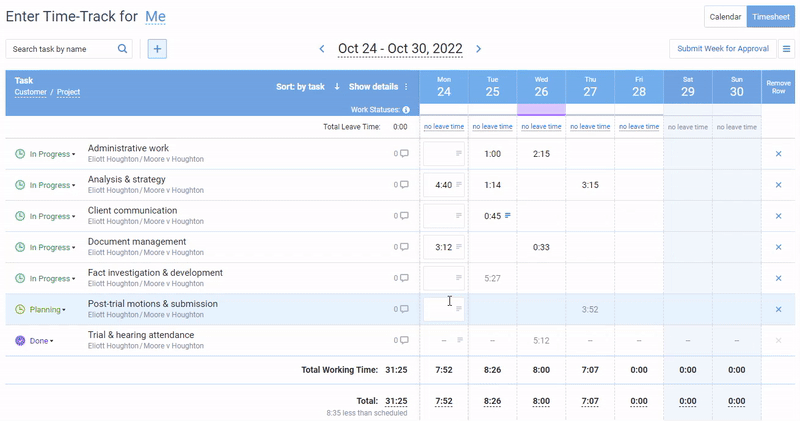
actiTIME features both automated and manual time tracking tools, enabling businesses to efficiently monitor employees’ working time across multiple projects and tasks. Besides, it provides detailed reports on the overall time worked, and the number of hours spent on each project and task, allowing businesses to accurately measure employee productivity and identify areas for improvement.
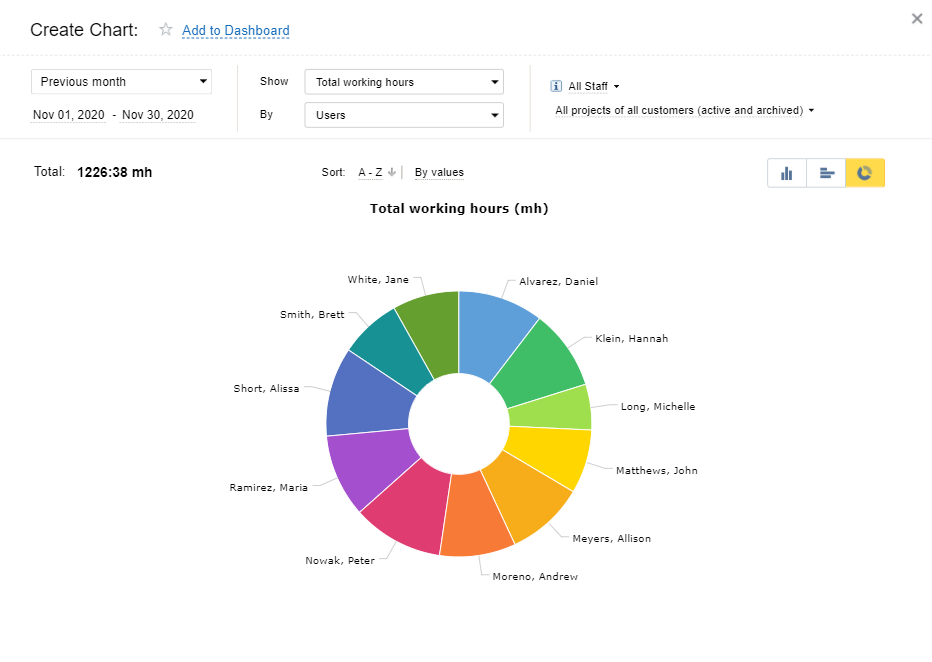
actiTIME lets you set project deadlines / estimates and track employee performance against them. It provides real-time updates on project progress and makes it easy to compare project estimates against actual results. This helps to adjust timelines, identify areas where additional resources may be needed, identify potential workflow bottlenecks, and improve future project estimates.
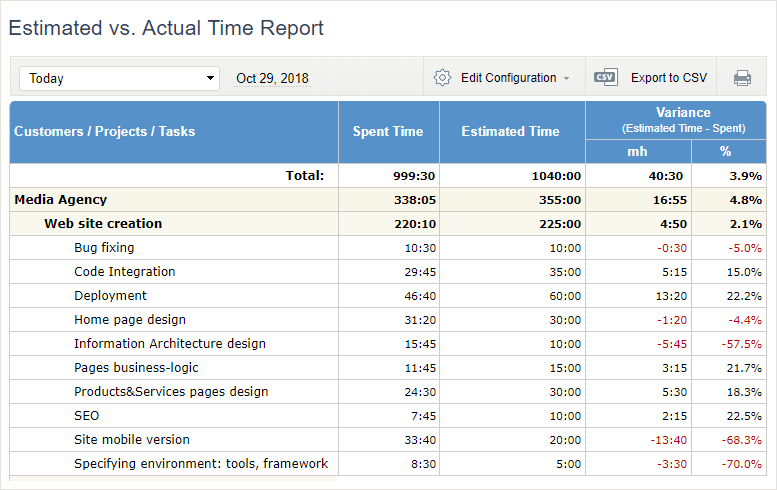
actiTIME offers basic time off management functionality to track employee absences as well. More than that, the platform integrates with actiPLANS, a comprehensive leave management system that streamlines absence management and provides a wealth of data for better resource planning.
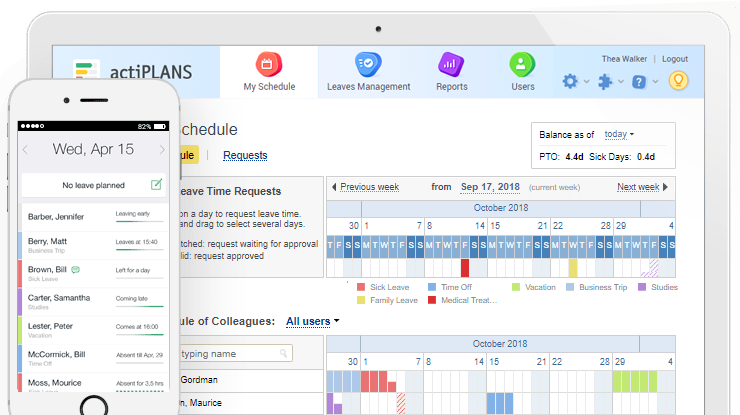
With its advanced features and robust reporting capabilities, actiTIME can help businesses become more efficient and profitable in the long run – all while respecting employee privacy!
Sign up for a free actiTIME trial today and get ready for a long-awaited productivity boost.
2. Establish clear and transparent policies
Before implementing any form of employee monitoring, it’s important to establish a clear policy that explains what will be monitored and how it will be done. This will guarantee that employees are fully aware of the reasons for monitoring and what is expected of them + they will feel more secure knowing that their privacy rights are respected
Here are some steps you can take to create such a policy:
- Start by defining the reasons for employee monitoring: Do you strive to protect yourself against data breaches, improve workplace productivity, or maintain compliance with any other company policies and performance standards? Whatever the reasons may be, outline them thoroughly in the policy.
- Communicate the policy to employees: Provide every team member with a written copy of the policy and answer any questions they may have.
- Establish clear boundaries: Be clear about the activities you will monitor, how you will do it, and what limitations your approach may have in order to minimize employees’ resistance and resentment to the practice.
- Obtain employee consent: Avoid any stealthy surveillance! Employees should know that you will monitor them and that their data will be collected and analyzed.
- Reassure employee privacy: Intrusion on employee privacy is no joke. The collected data should be used only for the purpose it was collected and must not be shared with third parties unless explicitly defined in the policy and permitted by the law.
3. Focus on rewards instead of punishment
“You should be monitoring employees not with a raised baton, but with an outstretched hand.” – Reid Blackman
Any form of monitoring is traditionally associated with oppression and punishment. However, you can largely benefit by linking the monitoring process to your employee appreciation and development programs.
By doing so, you can:
- Provide your team members with a clear understanding of their job responsibilities, performance expectations, and opportunities for growth within the company.
- Foster a culture of transparency, trust, and mutual understanding, which can have a positive impact on team morale, job satisfaction, and overall productivity.
When employees feel valued, supported, and invested in, they are more likely to be committed to their work and strive for excellence. Therefore, if you link employee monitoring to rewards for positive behaviors and excellent work results, you will not only invest in the growth and development of your team members but also in the long-term success of the entire organization.
Here’s what you can do to achieve this goal:
- Set clear performance indicators for each employee: This will assist in evaluating employee performance objectively and providing evidence-based feedback for improvement. The performance indicators should be communicated to all employees, and regular monitoring should be done to assess their progress.
- Give regular feedback: This feedback should be constructive and aim to help employees attain a particular improvement goal instead of simply criticizing them for poor performance. This way, your employees will be able to better understand their strengths and weaknesses and get a necessary motivation boost to advance professionally.
- Provide support and training: If you see that some employees are underperforming, one of the best things you can do for them is to offer some training and guidance. This will help them grow in their careers while also leading to the overall growth of the organization.
4. Consider individual circumstances
Even the most dedicated and hard-working employees may struggle with productivity during difficult times. Thus, it’s essential to take these individual circumstances into consideration when monitoring your team.
Perhaps an employee is dealing with personal issues that are affecting their work, or maybe they are struggling to balance work with remote learning for their children. By being understanding and flexible, you can help support your employees through challenging times while still maintaining a level of accountability that benefits everyone.
Remember, a little empathy can go a long way in creating a positive and productive workplace.
5. Treat everyone equally
It’s not fair to subject certain employees to more surveillance than others based on seniority or any other factors. Not only is it unethical, but it also opens up the opportunity for charges of discrimination.
By applying monitoring policies equally across the board, you can ensure that everyone is subject to the same level of oversight, making it a fair and just system that everyone can trust.
6. Use unintrusive tools
As you already know, stealthy surveillance tools and too much monitoring often do more harm than good for employees and businesses as a whole. That’s why it’s crucial to invest in unintrusive and transparent tools that respect your employees’ privacy and help them become more productive without feeling like they’re constantly being watched.
With these tools, you’ll be able to track your employees’ work without invading their personal lives, allowing them to focus on what really matters: delivering results.
So, if you’re looking to improve your team’s productivity and boost morale, try out an automated activity tracker with flexible data-sharing settings and a strong emphasis on personal privacy. Luckily for you, we know one of the best of such tools – Time Management Assistant.
Employees can use this fully automated activity tracker as a personal productivity tool or in combination with actiTIME. Either way, it lets them effortlessly keep track of their online activities, saving valuable time and eliminating the risk of human error. It ensures that you have a more accurate record of the time spent on each activity, which is crucial for client billing or providing proof of work to your managers.

Time Management Assistant gives a clear overview of your online activities. You’ll be able to see exactly how much time you spend on each website, identify possible productivity drains and take steps to reduce them in order to make sure you’re meeting project deadlines and client expectations.

Time Management Assistant lets you customize your tracking preferences. You have the option to exclude certain websites from data collection, which is especially useful for those who use social media or personal websites during the workday. This feature ensures that you are only tracking the activities that are relevant to your work or productivity goals.

But what about privacy? We understand the importance of keeping your data confidential, which is why Time Management Assistant allows you to decide what data to export and share with your managers. Your privacy is 100% guaranteed, so you can rest assured that your personal information is safe and secure.
Ready for secure, respectful, and customizable productivity monitoring? Click here to get your Time Management Assistant now!
Conclusion
We hope that after reading this blog post, employers can understand the importance of balancing respect for their employees with the need to ensure results-oriented productivity. While this approach needs to be tailored to each individual workplace and team situation, the tips mentioned here are solid starting points.
Remember, you cannot achieve progress through harsh surveillance regimes or simply ignoring lack of performance – instead, a respectful feedback system should be established in order to maximize results yet still maintain a positive and humble work environment.
Ultimately, when employee morale is high and everyone feels part of a unified partnership it creates positive ripple effects throughout your entire business. Thus, take the time to invest in your employees’ performance so that your business realizes its maximum potential, and let actiTIME help you with that!
Sign up for a free online trial today and start to monitor employee productivity in the most effective way.















































